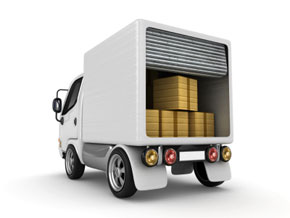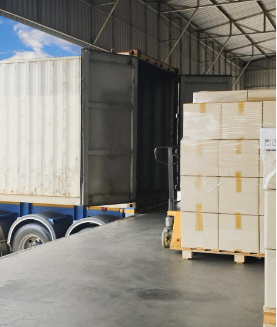
After your products leave the production side of your business, they are ready for your customer. Even if your outbound logistics center is merely on the other side of the warehouse or a few steps away in your workroom, your inventory becomes a different entity with its own set of logistics management requirements.
StorageYour warehousing procedures should be analyzed to maximize your efficiency in moving, storing and shipping your products. Transferring your goods to your warehouse requires scheduling and may involve shipping arrangements. Warehouse personnel need to be prepared to receive the new inventory and set up space for storage. Even if it's just you and a helper in your workroom, you still need the time and space to get your additional products situated and entered into your inventory system. Minimizing the times a product is moved increases your employees' productivity. By strategically sequencing how your product moves through your warehouse to your customer, you can reduce the cost per unit significantly.
Your facilities may need specialized conditions such as heating or cooling to maintain perishables, or your products may require specially designed storage solutions. This creates additional warehouse expense and drives up your final cost per unit. The per unit cost goes up if your inventory sits in the warehouse unsold.
For this reason, it's important to set up a strategy for minimizing storage time between a product's completion and its sale. Demand-driven production cuts down your warehousing costs, but this method leaves you open to possible delays in delivering time. Conversely, production based on historical ordering patterns leave you open to increased storage costs and reduces profit, but this method ensures prompt delivery.
TransportationTransportation costs have caused the price of many products to skyrocket. Fuel prices are not going down, so businesses must think long and hard to find ways to reduce their delivery costs. These costs can be reduced in a number of ways. Start with your product design. If the weight and dimensions of the item are unalterable, consider the product's packaging. Reducing the size and weight of the packaging may allow you to pack more merchandise in a space. Odd-shaped packaging may waste a lot of packing space. Uniform packaging shapes maximize the number of items that can be shipped in a container.
This leads to the consideration of transporting your merchandise in a truck that is not filled to capacity. Proper load planning can significantly reduce shipping costs since fewer shipments and equipment is necessary. A truck that is less than full is costing you money. To eliminate less than truckload (LTL) shipping, plan a delivery route that accommodates all the deliveries required to fill a truck. Using alternative shipping methods may also eliminate the need for LTL shipping.
A small business that uses other shipping methods can incorporate some of these tenets into their own shipping practices. Throwing your order in a random box and shoving in packing peanuts before taking it to UPS or FedEx may not be the most cost-effective methods of delivering your product.
Calculate the proper size container to hold your shipment most effectively, and compare various shippers' delivery costs. Minimizing the boxes you need to ship your orders and the amount of filler required is one way to reduce your shipping costs. Reduce the number of trips to your shipper, or arrange for orders to be picked up.
CommunicationsCommunication technology plays a key role in logistics management. Software automates many procedures and relays information about orders to the warehouse, the accounting department and the customer. Scheduling and updating is also integrated into the software packages. This seamless coordination of all phases of warehousing and delivery makes it possible to minimize staffing time and maximizes your customer interaction through automated communications.
Small businesses may not have the need for such advanced communications solutions, but a relational database inventory system that interfaces with an accounting program is an all-in-one software solution that eliminates a lot of redundant data input.
Implementation of cost-saving strategies throughout the entire outbound logistics phase of your merchandise can offer substantial savings. It's important to develop a plan and research potential scenarios. Spending time on these "what if" scenarios and coming up with concrete figures is well worth the effort. Your successful cost reduction efforts will increase your net profit and allow your business to grow and prosper.







